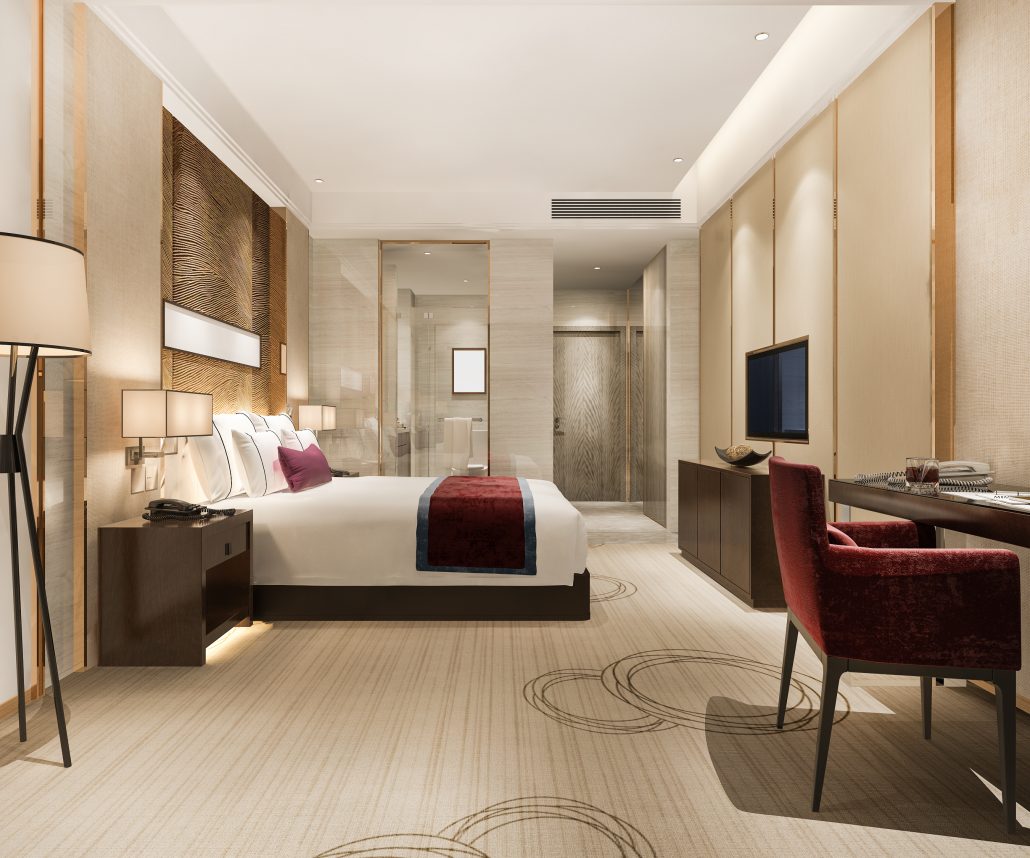Establishing specific but simple, comprehensive and flexible room types is the best way to pique interest among prospects and increase sales while making rooms management easier. Guest writer Benjamin Verot from HotelMinder shares his tips on how to configure hotel room types?
Hotel room categories and room types are defined to let customers know what they can expect and what needs to be set out as per target market and trends.
Inventory is the number of rooms available to distribute or sell across channels is the most important aspect of your hotel business.
With an updated inventory, you can control the types of hotel rooms you display to a specific market segment. As it goes, an unsold room is a lost opportunity.
Any day you’re unable to sell a room, you lose a chance to generate revenue.
After you’ve identified and segmented your potential customers, you can start working on configuring your room types in the most efficient way so they each reflect their own personality and full potential.
For a guest, a room could mean privacy, comfort, cleanliness, convenience and security. For a hotelier, it’s a source of revenue, like any other product offering. In order to realize the sales potential, hotel rooms need to be set up and defined properly, with each one highlighting the Unique Selling Point (USP) or the offering. These days, hoteliers and managers can’t offer just standard rooms for reservations.
Categories and room types need to be defined as per target market and key trends.
Understanding Hotel Room Types
Different types of hotel rooms are defined to let customers know what they can expect.
The room type controls the inventory of room rates created under one category. With several types of hotel rooms, each one needs to be configured properly. More often than not, room names and categories are defined by occupancy but there could be other factors impacting the naming convention.
Rooms tend to fall into several categories, depending on price range, amenities (pool-side or sea-facing), type of decor, occupancy etc. Descriptions and images of amenities in each room need to seem coherent with the category’s name and type. It helps your guests visiting the hotel website recognize rooms easily.

Standard Room Types for Small & Mid Sized Hotels
- Single Room – 1 bed, 1 occupant
- Double Room – 1 bed, 2 occupants
- Twin Room – 2 beds, 2 occupants (can sometimes have joining single beds)
- Triple Room – 1 double and 1 single bed, 3 occupants
- Quad or Family Room – 3 beds (1 double and 1 single), 4 occupants
Additional Room Types for Boutique & Big(ger) Hotels
- Queen Room – 1 queen bed, 1 or more occupants
- King Room – 1 king bed, 1 or more occupants
- Suite or Executive Suite – A room with separate living space and/or multiple bedrooms
Other Room Types
- Apartments
- Accessible Rooms – a room designed to accommodate specific needs of disabled people
- Studio – A room with a studio bed or a sofa bed
- Etc.
How to Define the Right Hotel Room Types?
With changing market trends and increasing awareness among customers, hotels aren’t offering just standard rooms anymore. Guests can choose from a wide range of room categories.
A delightful and specific selection allows any group or individual to identify with the choices of room configuration. If you’ve been wondering about room types for your hotel, you could focus on the aspects below.
1) Know Your Target Market
As it goes with any business decision, it’s important to define your target market. Your rooms should be configured to suit guest preferences. Sometimes, you may try to be all things to all people.
A one-size-fits-all approach doesn’t get you anywhere these days. The room offers will seem diluted, and potential prospects will be unable to relate the rooms to their specific needs.
The interior and amenities play a huge role in determining room types. Define what you offer to your guests. It could be a peaceful retreat, a business facility, a private beach or anything else that is of value. Your room type should clearly focus on the USP being offered.
2) Show the Uniqueness of Your Property

It’s important to let your guests see the different personality and character in your hotel pictures, website, descriptions and even reviews. A lot of hotels have standard room types, pictures and amenity descriptions.
To stay ahead, it’s best to define and describe room types in greater detail.
You need to highlight what makes your property unique, which allows you to charge a higher price!
3) Room Types Management as Part of Your Sales Strategy
Like any sales strategy, you need to focus on certain key factors. When it comes to managing room types, simplicity becomes a virtue.
You need to let your guests understand how your room types best serve their needs, and provide further add-ons to close the deal.
4) Keep It as Simple as Possible – Here’s why!
Hoteliers, especially the ones who own small properties, tend to come up with too many room types as they consider every room to be unique.
While it’s important to differentiate major room features, whether, through descriptions or naming convention, it’s also important to consider that a higher number of room types means that it will be harder to reach 100% occupancy and might be confusing to guests.
If you have a small property, and each room offers something unique, it makes sense to list each room as a different room type. However, for a bigger hotel it’s better to not exceed 5 room types for optimal inventory management.
Here’s why – imagine that you have two hotel rooms, ‘Room A’ and ‘Room B’ and three guests, ‘Guest 1’ and ‘Guest 2’, already booked in, and a potential ‘Guest 3’:
 If ‘Room A’ and ‘Room B’ are of different Room Types, then there’s no availability for ‘Guest 3’ to book any room on OTAs or through your Website while you actually have a room available. It’s easy to see how this is a problem!
If ‘Room A’ and ‘Room B’ are of different Room Types, then there’s no availability for ‘Guest 3’ to book any room on OTAs or through your Website while you actually have a room available. It’s easy to see how this is a problem!
It’s only if ‘Guest 3’ contacts you directly that you can offer to split his/her stay between two rooms, which is far from ideal (and contacting ‘Guest 1’ or ‘Guest 2’ to move to another room type is not convenient either):
 But if ‘Room A’ and ‘Room B’ are the same Room Type, then the available room will show on your website and on OTA websites and be bookable by ‘Guest 3’ at anytime and without any additional effort on your part:
But if ‘Room A’ and ‘Room B’ are the same Room Type, then the available room will show on your website and on OTA websites and be bookable by ‘Guest 3’ at anytime and without any additional effort on your part:
 Note: most Property Management Systems have a way to allocate rooms automatically in the best way possible, or help you do so manually.
Note: most Property Management Systems have a way to allocate rooms automatically in the best way possible, or help you do so manually.
With a simple setup, your online distribution efforts will be more focused. Unless intentional, you should have the same room types on different channels, which allows bookers to compare without much effort.
Also, remember that direct bookings need to be the core of your overall pricing and distribution strategy.
5) Flexibility is Key
 With a good hotel Property Management System (PMS), you can easily move bookings between different room types, allowing more flexibility in the long run.
With a good hotel Property Management System (PMS), you can easily move bookings between different room types, allowing more flexibility in the long run.
A solid PMS, Channel Manager and Website Booking Engine are the need of the hour, every hour. They make it easier for you to manage inventory.
6) Add-ons to Further Differentiate Your Offer
Add-ons are always a good touch to close the deal. For instance, most flexible hoteliers add an additional bed for a couple with a toddler. For senior citizens, a caregiver could be assigned to the room.
Similarly, in rooms with double or single beds, a couch can be used as an extra bed to occupy another family member.
Add-ons give your prospects a sense of concern from your side, and make your property seem like a good choice.
Hotel room add-ons are also an excellent way to generate additional income as you can easily turn them into supplements.
How to Define Specific but Comprehensive Room Types?
Guests looking to book stays are as price-conscious as ever, but it doesn’t mean prospective guests won’t be likely to shed a bit more for a hidden gem!
If your room types serve specific needs and allow guests to align with your offering, you will see more bookings coming in: while someone might want a boutique experience, someone else would look for a pool-facing room. The interior and amenities play a huge role, and your content should take into account all Unique Selling Points (USP).
The right classification of rooms lets guests see the different personalities and character in every room.
Defining specific but comprehensive room types is the best way to pique interest among prospects and allows them to take a look at what you’re offering.
Maximize your hotel performance
HotelMinder is a leading consulting agency for hoteliers to maximize business performance with hands-on advisory & project management services; a free and unbiased hospitality knowledge platform with Tech, Marketing, Revenue and Operational content; and a marketplace for professionals from all over the world to find hospitality-specific software and services that best match their vision and requirements.

About the Guest writer